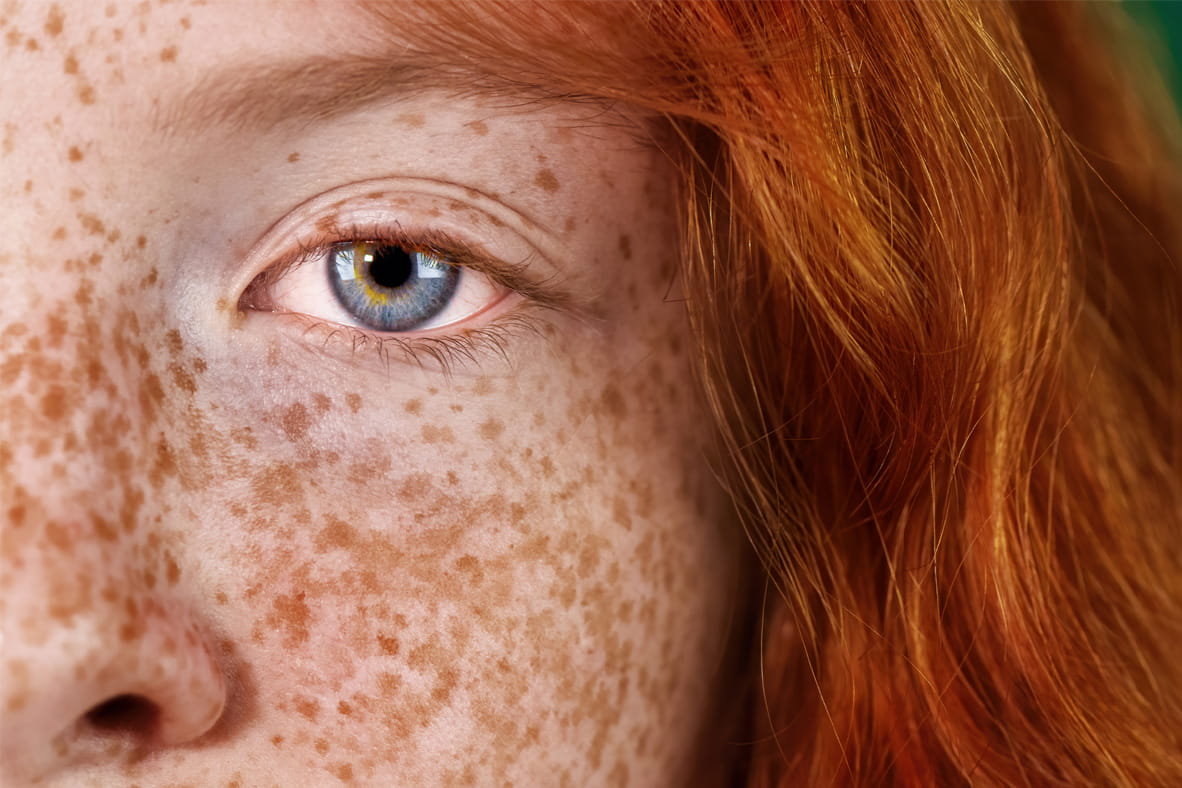
Sun-induced skin pigmentation is a topic of particular importance now, as spring is approaching, the sun is getting stronger, and our exposure is increasing as the nice weather draws us outside.
Sun-induced skin pigmentation is one of the most common skin problems that occur due to sun exposure.
Pigmentation manifests itself in the form of dark spots on the skin, also known as hyperpigmentation. This pigmentation occurs in response to exposure to UV rays, and is particularly pronounced on the skin of the face, neck, hands, and décolletage, as these areas are the most exposed when the weather is nice.
Pigmentation occurs in response to exposure to UV rays, which damage melanocytes in the skin.
Melanocytes are cells that produce the pigment melanin, which is responsible for skin color. When the skin is exposed to the sun, UV rays stimulate melanocytes to produce more melanin, which leads to skin darkening.
However, prolonged exposure to the sun can cause excessive melanin production, which leads to hyperpigmentation and the appearance of dark spots on the skin.
People with lighter skin are more susceptible to pigmentation than those with darker skin. In addition, older people are also more prone to pigmentation, as the skin's ability to regenerate decreases with age.
The best way to prevent the appearance of pigmentation on the skin is to avoid prolonged sun exposure. This is especially true during the hottest parts of the day, from 10 am to 4 pm. Sunscreen with a high SPF should always be used. It is also recommended to wear a wide-brimmed hat and sunglasses that block UV rays.
How to fix the issue when pigmentation occurs?
There are methods that lead to quick results, but they can often be expensive and aggressive for the skin. Some of the methods include laser therapy, microdermabrasion, skin lightening creams, and chemical peels.
It is not necessary to immediately jump to pigmentation with all the artillery, sun-induced pigmentation is seasonal, and they will disappear over time as you stop exposing yourself to the sun. The truth is that it goes very slowly, but patience can save you a lot of money and pain that fast treatments bring.
If you decide to stay in the patient group and wait for things to pass, what I can offer you is a scrub and helichrysum serum to speed up the process naturally.
The scrub is rough enough to gradually remove the upper layer of dead cells with regular use, while the helichrysum serum enriched with marigold oil will nicely nourish the skin, help it to regenerate - and helichrysum, the key ingredient in everything, helps reduce the visibility of pigmentation, spots, and scars.
It doesn't happen overnight, but it definitely happens faster than just waiting.
With love,
Lavender Girl







